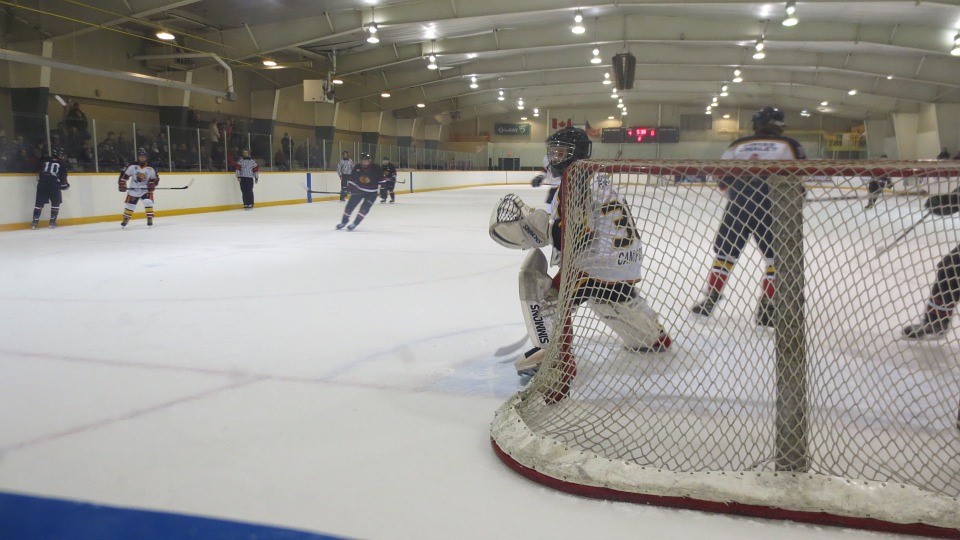Case Study: Mould Remediation at a St. Catharines Ice Arena
 Technique Used: Dry Ice Blasting
Technique Used: Dry Ice Blasting
Location: St. Catharines, Ontario
Service: Mould Remediation
Ice rinks are a part of Canada’s national identity. With hockey being our national sport, most Canadians have, at one time or another, sat bundled in warm clothes, watching a hockey game in an arena.
Maintaining the ice in an arena requires a cooling system that keeps the ice frozen at a temperature of -5 degrees Celsius. Luckily for spectators, the air temperature in an arena is kept a bit warmer at approximately 10 degrees Celsius.
Unfortunately, when the temperatures inside the arena interact with the outside temperature, which, depending on the time of year, can be quite a bit warmer, the relative humidity level in the arena increases, creating a perfect breeding ground for mould. The ceiling in an arena is particularly susceptible to condensation caused by higher humidity levels, especially where piping is exposed to the outside, and this tends to be where mould takes root. Once mould spores attach to a surface, they spread quickly. A quick online search for “ice arenas affected by mould” brings up multiple references to arenas across Canada that have had to temporarily close due to mould, usually affecting the ceiling and roof area.
The Situation
This was the case for an ice arena in St. Catharines, Ontario, when the arena managers discovered mould on the ceiling of the building. The growth was extensive, covering the entire flat roof including the wooden decking. As mould can send toxins into the air leading to health issues, the arena had to take action immediately to remedy the problem.
The Solution
Given our extensive experience with mould remediation projects, as well as a trusted process and an effective cleaning method, Wickens Dry Ice Blasting was hired by the St. Catharines arena to clean the mould from the ceiling and support structures.
Wickens first assessed the site and set up a containment area where the cleaning would be carried out. All other areas, including the stands and seating, were safely blocked off. HEPA filters were then installed in the containment area to create negative air and contain the mould spores as they were removed from the surfaces. Wickens technicians, operating from lifts and wearing full Personal Protective Equipment and respirators, then carried out the blasting.
The Result
The mould spores and mould residue were fully removed within the desired timeframe of two weeks, and air tests conducted by independent environmental consultants confirmed that the environment was mould-free. The arena managers were then able to take steps to prevent future mould growth by applying anti-micro meal paint to the ceiling.
Mould is a serious problem that can deteriorate surfaces and lead to health issues. However, with the right cleaning method and remediation process, it’s possible to quickly and thoroughly get rid of mould.
Contact us today to find out how we can help you address your mould issues.
- Happy Holidays from Wickens - December 20, 2023
- Maximize Your Year-End Shutdown: The Ideal Time for Industrial Cleaning with Dry Ice Blasting - November 24, 2023
- Introducing the Viking 4000 – A Game Changer in Dry Ice Blasting - July 28, 2023
